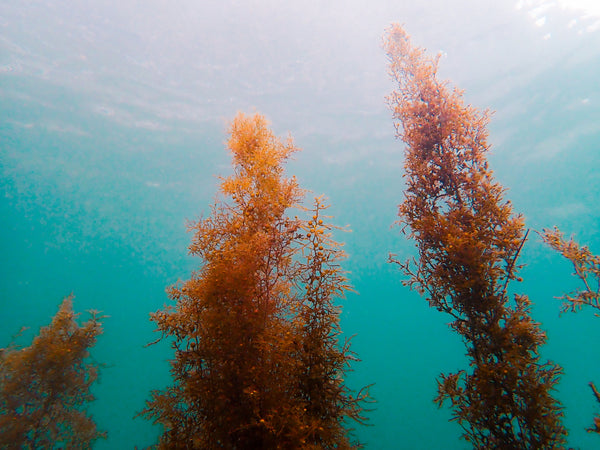Moshio Magic: The Ancient Seaweed Salt of Awaji Island

Awaji is an island in the present-day prefecture of Hyogo. Its unique and fertile landscape produces some of Japan’s finest Kobe beef along with an abundance of vegetables, decorative flowers, and plants. Awaji even holds a special place in the creation myth of Japan itself, as it’s believed to be one of the eight islands that the sibling gods Izanagi and Izanami conjured from the sea using their sacred spears.
In addition to these products and legends, Awaji is famous for yet another special product: moshio, also known as seaweed salt.

Unlike refined salt, moshio is not pure white in color. Instead, it has a pale, toasted beige color, a result of the many minerals it obtains from the seaweed it’s mixed with during production. These minerals include iodine, calcium, potassium, and magnesium. Lower in sodium content than traditional salt and imbued with a savory umami flavor, making moshio involves a painstaking production process that has been practiced for centuries.
The production of salt from seaweed on Awaji Island has a long history. In fact, it is even mentioned in the Manyoushuu, an 8th-century anthology of Japanese poetry. The production of moshio halted for some time, but fortunately, the tradition is being revived by an Awaji-based company, carrying on its 350-year-long history.
Of course, production methods have changed over time. Originally, moshio was created using the ash generated from baking seaweed. The process involved pouring seawater over layers of seaweed and ash before boiling that mixture down until concentrated.
Nowadays, moshio is made differently, with a labor-intensive process spanning four days!
The first step involves gathering seawater, which is collected and filtered straight from Fukura Bay on the southwest tip of the island. This filtration process helps to yield a higher salinity, which is then concentrated even further by heating the saltwater in a large cauldron for almost an entire day. This increases the salinity by 20%, leading to the creation of salt crystals. Seaweed is then added to the boiled water and left to soak overnight.

After the seaweed has had a chance to soak, the water turns a coffee-like color. This mixture is once again boiled down and concentrated, and after many hours, white salt crystals begin to form on the surface of the water. These are known as “flowers of salt,” or fleur de sel, which eventually sink to the bottom of the pot to be separated later.
On day three, the mixture is boiled and carefully stirred in order to reduce it even further. Then, the water is refrigerated for a day before being sifted. On the fourth day, the mixture is strained, and clusters of salt are separated by size. The salt is inspected by the keen and watchful eyes of moshio artisans, who spot and remove its impurities. At long last, the final product is finally packaged and ready for purchase.
Moshio is a flavor-packed, umami-rich salt that is perfect for finishing off any savory meat, fish, or vegetable dish. Experience the abundance of Awaji’s bounty infused in each crystal!
About the Author:
 Kevin Kilcoyne
Kevin Kilcoyne



